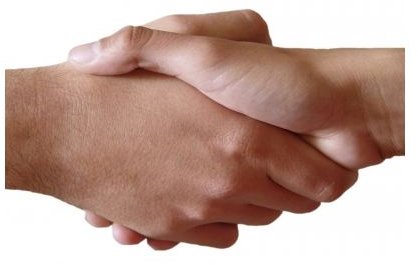Body Language Mixups: How Common Hand Gestures Such as Thumbs-Up and Handshakes Vary Across Cultures
Body Language as Communication
As a general rule, body language is believed to comprise up to 90% of our total communication. Studying certain patterns of movement allows us to communicate non-verbally within our own cultural groups. It is important to understand that one culture’s set of acceptable body language gestures or movements may not translate with the same meaning in a different culture. For example, a handshake can denote a greeting and respect in one culture.That may not be the case in another culture, where a handshake may be taken as an insult. Body language is in fact the most mistranslated form of human communication in our world today and that is based on simple cultural differences.
Here, we are going to take a look at the most common mistranslated cultural body language differences in order to help you become more comfortable and correct the next time you visit another country. For more information on body language as communication, check out the Conscious Body Language: Gestures and Mimicry from A-Z series.
Different Forms
**
Shaking Hands
In America, the cultural gesture of shaking hands upon greeting is considered the norm when doing a person-to-person introduction. In fact in America, to refuse a handshake is considered a very rude gesture. In Saudi Arabia, you can shake a man’s hand after meeting him but you cannot shake a woman’s hand at all in greeting. Under the Sharia Laws, it is immoral for a woman to greet any man in public other than her husband. So, to keep yourself and someone else out of trouble in Saudi Arabia, leave the handshake gesture alone unless a man extends his hand to you first.
A-OK
The OK hand gesture in America and England is quite popular and considered a general gesture that denotes an agreement of sentiment. This gesture in Brazil is the equivalent of using your middle finger as a gesture here in America. The OK hand gesture is also taken as an insult in most Latin American countries, Austria and France.
Thumbs-Up
The Thumbs Up gesture can be an equivalent to the OK gesture and is widely used within America and England. Once again, though, in a large amount of cultures around the globe giving a Thumbs Up gesture is a very large insult. According to Joel Sherzer, a linguistic anthropologist, using the Thumbs Up gesture anywhere in the Americas excluding the United States is a horrible idea. Using this gesture can be denoted as a sexual insult and correlates to the middle finger meaning in the United States.
This is just a small sampling of how simple body language gestures can be interpreted in different cultures. If you do intend to travel abroad the best course of action is to take the time to understand the culture of the country you are going to. You may also want to keep your body language in check, to avoid offending anyone until you get the chance to observe their culture better. Human consideration can be the best body language tool you have.
*image used is royalty free stock
